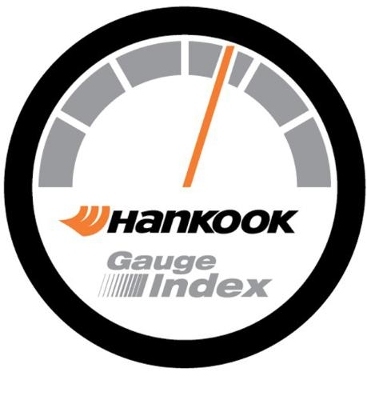What Drivers Need to Know for El Nino
 |
WAYNE, NJ -- January 11, 2016: With El Niņo being the talk of the country, drivers everywhere are bracing themselves for dicey road conditions. Everything from snow to heavy rainfall is a concern on all Americans' minds as they need to be alert about road safety and make sure their cars are properly equipped to help them through winter weather jams. In their latest quarterly Gauge Index, Hankook Tire found out what drivers believe are the essential tools and preparatory skills needed for winter weather.
Drivers in the colder climates are no strangers to what the winter has in store, which is why they may be more inclined to set their alarm clocks a little earlier in the morning to allow for shoveling or defrosting. According to the Gauge, thirty-two percent (32%) of Northeasterners say they give themselves at least an extra 15 minutes to warm up their cars or dig out of the snow in the morning. Although Midwest drivers tends to see the same chilly, snowy mornings, they don't prepare the same way, with only 22 percent (22%) giving themselves that much time to dig out.
For many drivers, the ability to see the road is actually less important than having the tools necessary to stay on it. The Gauge found that fifty-six (56%) percent of Americans believe the potential for skidding will keep them home, while thirty percent (30%) say that low visibility will keep them off the roads. Further, more than half (52%) of Americans believe that good tire tread depth is the most important thing a car should have in snow or rain, over working windshield wipers at thirty percent (30%).
Americans' cars may be ready for adverse winter conditions, but the majority of drivers apparently don't have a solid grasp on the rules of the road in these specific circumstances. When asked what is the proper amount of car lengths drivers should keep from the car in front of them on the wintry roads, sixty percent (60%) said it should be between two and four. However, AAA recommends keeping a distance of 10 to 12 seconds which equates to six car lengths or more while driving in adverse conditions.
"In light of an epic El Nino year, Hankook Tire wanted to better understand how inclement weather affects drivers' behaviors on and off the road," said Henry Kopacz, Public Relations and Social Media Manager, Hankook Tire America Corp. "The results from our latest Quarterly Gauge Index were incredibly valuable in helping us determine, not only how Americans approach unfavorable road conditions, but also their sentiment towards general car safety."
Hankook Tire offers drivers the following tips to stay safe on the roads this winter:
Don't mix your tires – Never mix tires with different tread patterns, performance ratings or sizes. Use identical tires on all of your vehicle's wheel positions in order to maintain the best control and stability. In cold temperatures and slick surfaces that require significant grip, a dedicated winter or all-season tire is best for your car. High-performance winter tires like the Winter i*cept evo2 offer the sporty, durable elements drivers love, along with driving stability and excellent traction on snow and ice allowing for a safer experience.
Fill your tank – Keep your gas tank at least half full to avoid gas line freeze-up. A car's fuel lines can freeze up very easily in the winter, and this usually happens when the gas level is below half a tank.
Air them up – Make sure your tires are properly inflated. As the temperature drops, so does tire inflation, decreasing 1-2 pounds for every 10 degree drop in ambient air temperature.
The Hankook Tire Gauge Index is a quarterly survey of Americans that uncovers their attitudes and opinions about all things related to driving. The winter installment of the survey, conducted December 11, 2015, polled over 1,000 randomly selected Americans on winter driving behaviors and how they prepare for winter and unfavorable driving conditions.


